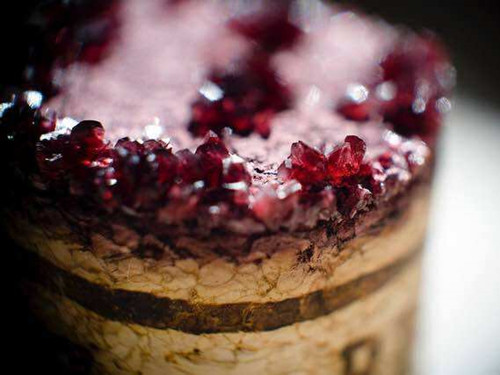Sometimes you can see small, transparent, glass-like crystals in wine, they are tartaric acid not dissolved, also known as “wine diamonds.” Tartaric acid is the most important “acid” in wine, and it is also the most important source of acidity in wine. It has very good durability and stability and therefore contributes to maintaining the flavor and color of the wine.
What’s Tartaric acid?
Tartaric acid, or 2, 3-dihydroxysuccinic acid, is a substance found in a variety of fruits including citrus, grapes, bananas, tamarinds, and guavas, and is one of the major organic acids in wine. Tartaric Acid was first extracted from tartarite, a byproduct of wine-making. This substance is the acid salt of a type of sugar called cream of tartar and forms during fermentation. When these acids react with sugars, they form a compound known as cream of tartar. It is a harmless crystal of Tartaric Acid that forms in red and white wines that have not yet been cooled and stabilized.

Natural source of tartaric acid
Grapes are the cheapest source of photoactive tartaric acid, often referred to as “natural tartaric acid”, mostly L-tartaric acid, which is still the main or even the only source of L-tartaric acid as a natural product. L-tartaric acid can be produced by acidizing tartarite, a by-product of winemaking industry. D-tartaric acid is rare among natural products but is present in relatively high levels in a plant from Mali in West Africa. When we talk about natural tartaric acid, we mainly refer to L-tartaric acid.
Due to its lower price, the substance is also manufactured synthetically by using the chemical maleic anhydride, which is derived from petroleum products. This substance is cheaper than natural tartaric acid and is increasingly used in a range of products, including winemaking. Because synthetic tartaric acid is less expensive, it is often used in the food and beverage industry. In 2019, synthetic tartaric was estimated to hold 60% of the global market. The growing popularity of plant-based alternatives has prompted manufacturers to move toward natural tartaric acid for a variety of uses.
Natural tartaric acid is commonly used in the food industry and has multiple applications. Its use as an antioxidant and as an emulsifier makes it a popular food additive. It is a common ingredient in many foods, such as baking powder and fruit juices. The FDA has not yet determined the safe levels of tartaric acid in foods. Natural tartaric acid is used to preserve food, and it is a common ingredient in many foods. In fact, tartaric acid is so common that it is used in everything from wine to bread to antacids. While tartaric acid is not a food additive, it is an effective preservative.
In the chemical industry, it is a fluidizer, dyeing agent, and printing agent. While tartaric acid is similar to citric acid, it is produced from a different source. While the two are similar, they have different uses. In wine-making, tartaric acid is used as an excipient in drugs. The two types of tartaric acids differ in price, but both are highly effective in cleaning metals. In the mirror-making industry, tartaric acid is an important additive and reducing agent, which can control the formation rate of silver mirrors and obtain uniform coating.
In addition to its industrial uses, tartaric acid also serves as a natural emulsifier. In addition to being a useful raw material for organic chemistry, tartaric acid is also a useful ingredient in cosmetics. As a food additive, tartaric acid is commonly used in lipstick, perfumes, and cosmetics. Further, it is a widely used substance in pharmaceuticals and the pharmaceutical industry.
A Japanese pharmaceutical company has discovered that tartaric acid increases hair growth-promoting substances produced by scalp cells. When the cells related to hair growth and hair growth were cultured in scalp pores and given tartaric acid, the maximum number of substances that could promote hair growth increased by 1.6 times. It is not yet clear whether tartaric acid applied directly to the scalp or taken orally has any effect on hair growth because the experiments were conducted using only cells.
- Dandelion Extract: What It Is, Benefits, Uses and Side Effect - April 23, 2024
- Is Berberine Extract Help For Weight Loss? - April 11, 2024
- Why Is Pysllium Husk Powder A Popular Meal Replacement Ingredient? - April 3, 2024



